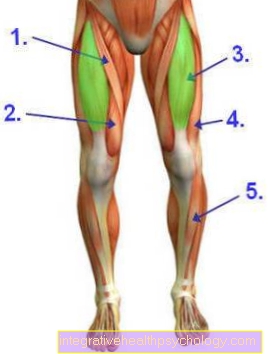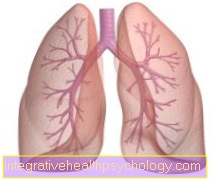health
Synonyms in the broader sense
Health sports, fitness sports, preventive sports, rehabilitation sports, aerobic endurance, endurance training, endurance sports and fat burning
English: health
Definition of health
Being healthy does not just mean being free from diseases; health includes not only physiological but also psychological and sociological aspects.
Thus, according to WHO (World Health Organization), health is a state of comprehensive physical, mental and social well-being.
("Health is a state of complete physical, mental and social well-being and not merely the absence of disease or infirmity")

Definition of health sport
Health sport encompasses all forms of sport in which the maintenance, improvement and prevention of health is understood as the primary goal. Sport is therefore instrumentalized and used especially in prevention and rehabilitation.
Sport is elementary for health and is an important part of acute treatment rehabilitation and care is the fourth pillar in healthcare.
The concept of health
Physiological health relates to physical condition. Determining factors are physical and physical conditions, the strength of the immune system and genetic predispositions. In addition to biological age and diet, other reference values that influence physiological health are a general healthy attitude towards life.
All personality traits are summarized under psychological health.
Attitudes and perspectives on different attitudes towards life such as Smoking and alcohol consumption are included here.In addition to character traits, stress resistance and the ability to relax are crucial for mental health.
Sociological health determines the framework in which people interact with one another. The family environment, friends, work and acquaintances, the reputation in society and the ability to communicate are prerequisites for social health. In every person, however, the individual personality is a unique, relatively stable, behavioral correlate that lasts over time and must not be disregarded.
Note: The term personality is to be used cautiously, as the attempts to explain the term almost correspond to the number of renowned personality psychologists.
In further definitions, in addition to the factors mentioned above, the ecological situation is often included in the definition of health. This means the living and environmental conditions in which people live.
Health models
The salutogenesis model
Aaron Antonowski presented a controversy on the risk factor model with the salutogenesis model.
He dissolved the existing border between be healthy and be sick and created a health-disease continuum. The transition between health and illness is fluid. The condition of a person is thus on a line where he is either more healthy or more sick. The position of each individual on this health-disease continuum is dependent on prognoses and expertise through individual assessments, ability to act in everyday situations. It is therefore not about eradicating disease-promoting risk factors, but about health-preserving protective factors. The key question is not how do I get sick, but how do I stay healthy?
The risk factor model
The question of disease prevention is in the foreground of the risk factor model.
According to this model, there are no healthy people, only sick and less sick people. This model is divided into risk and protective factors. In the physiological area, obesity, lack of exercise, smoking etc. are risk factors for cardiovascular diseases. The protective factors would therefore be sufficient exercise, ideal weight, etc. In order to prevent the risk of a heart attack, all risk factors must be eliminated.
fitness
The term fitness must not and cannot be equated with the term health.
Fitness is only one part of health and only relates to the physiological aspect. A distinction is made between two areas within fitness. On the one hand, the concept of fitness can be interpreted in a sport-oriented manner. Sports-specific aspects such as motivation and ability to compete are in the foreground. The risk of damage caused by stress or long-term wear and tear are accepted. Anaerobic endurance, speed, maximum strength, speed strength, explosive strength are included in addition to the forms of health-oriented fitness.
The health-oriented form of fitness is based on all aspects of promoting and maintaining good health. Aerobic endurance training (see below), Strength endurance, optimal mobility and the ability to relax are in the foreground.
How much exercise is healthy?
The question of the frequency of training is one of the most frequently asked and most difficult to answer questions in the field of sports science. The focus is on the individual requirement. The question therefore does not have to be how much exercise is healthy? Rather:
For whom, what sport is healthy, with what scope and intensity, with how many breaks?
The thesis that too much exercise is unhealthy is wrong. Marathon runners or cyclists with immensely high training volumes should therefore have problems with the musculoskeletal system during their career. However, this only happens in the rarest of cases when errors occur in the technology. Ball athletes are much more likely to complain of joint problems. Especially sports with quick changes of direction such as Badminton, tennis, squash, sports with increased body contact such as Martial arts football, handball etc. are anything but healthy.
Another misconception is that regular endurance training wears out the joints. Just the opposite is true. Who does not do enough sport has a higher wear and tear. How can this be explained? The human organism works on the principle of adaptation. This principle is particularly widespread in muscle building training. If you train your muscles regularly, you will achieve an increase in muscle mass. However, the fact that the passive musculoskeletal system (bones, ligaments, joints, etc.) is also adaptable is often overlooked. Those who train while observing the correct running technique stabilize their joints in addition to other symptoms of adaptation. The statement running is bad for the joints is therefore not true. Training with high joint loads is only advisable in individual cases, which have been accompanied by a previous joint injury. In such cases, you should switch to endurance sports such as swimming or cycling.
Occasional forms of overload often occur when the muscles (while running: (Thighs and glutes) is not sufficiently trained. Overload damage to the kneecap or spine can then result. The cardiovascular system and the metabolism can hardly be overloaded in healthy people and under normal weather conditions. Running with obesity is also not a problem unless it is a severe case of obesity.
It should not be overlooked that many recreational athletes often challenge the urge to exhaustion and the associated overload, and sport can thus become an addiction.
Further problems that arise when asked about the frequency of training are the fact that training not only increases performance, but also the ability to regenerate. Top athletes complete several training units every day. As a result, the limits of resilience become more and more difficult to identify with increasing performance. In order to optimize the training success, more and more recreational athletes commission a personal trainer for optimal training support in recreational sports.
Principles of health sports
- In order to achieve the health-promoting aspects of sport, the stress stimuli must be optimally set. Based on the training principle of the optimal stress stimulus, care must be taken with regard to health that the stresses are not selected too high. In addition, the body should be given sufficient time to regenerate. (Super compensation)
- Always adapt the training to the individual requirements (age, condition).
- Sometimes less is more. In the event of illness, skip the training. Always cure injuries.
- Always increase girth before intensity. Better to run longer than faster.
- Always take the advice of a sports doctor into account as you get older.
- Make sure you have the right equipment. Correct footwear is particularly important in running.
- Sport is healthy if it is done regularly. As a result, you should look for health-promoting sports that you enjoy, or at least not resist. If necessary, change sports more often.
- Take your time. The organism does not adapt overnight. The focus of health sport is aerobic endurance, which takes a lot of time in training as well as in preparation and follow-up.
Also read our topic: Training principles
Why do sports?
In view of the fact that regular exercise not only increases physical performance and physical well-being, but also increases life expectancy and strengthens the immune system, the question of frequent sports abstinence is very difficult to understand. A drug that has the same effects as regular endurance training would be priceless. But despite little effort and low costs, it is only a small number of people who specifically promote their health through sport.
But what is the reason for this phenomenon? In an age of growing boredom, there is trivially less and less time for regular exercise. The real reason for the growing abstinence from sport is the attitude to life that has become firmly established in the minds of many people. Achieve as much as possible and quickly with as little effort and effort as possible. This basic idea is contrary to every sports model. Only those who learn to work hard for their success will also accept long-term training in order to achieve their goals. Even health-oriented sport, at least initially, is inconceivable without exertion. This “exertion” must first be relearned. Those who are aware of this are one step closer to their health.
Sport as a tool
Health is packed into innumerable definitions by innumerable scientists. The question of what is sport is also a difficult question to answer. Healthy is someone who is not sick and sport is movement.
Thus, the patient who is discharged from the doctor as healthy every day and never wants this to be true is healthy, and the gymnast who hangs on the cross is not an athlete. In the eyes of the people, sport always has to serve a purpose. He is always used as an instrument to justify doing sports. Nobody does sport for the sake of sport. The basic idea that goes with sport, higher, faster, better, further is not necessarily wrong, but unhealthy. A central motive in sport is comparing performance and being competitive. The focus is on victory. But victory and defeat define each other. It is not uncommon for athletes with injuries to take part in competitions or get fit injections. In order to practice healthy sport, this thought must be avoided.
Sport in itself is not healthy, but it can be instrumentalized for health.
Endurance training and health
The change of widespread diseases to cardiovascular diseases, obesity and co., Is due to the attitudes towards life. Improper nutrition, stress and a lack of exercise are no longer uncommon in modern consumer technology. Targeted training in the area of endurance is all the more important in order to counteract these factors mentioned above.
The effects of aerobic endurance sport on the organism can easily be operationalized. With regular endurance sport, the cardiovascular system becomes more economical. The resting heart rate is lowered, the stroke volume increases and the oxygen utilization in the organism is improved. The heart therefore has to do less work. Endurance sports are also the best way to burn fat.
You may also be interested in this topic: Fat burning
What is meant by healthy eating?
Healthy eating is a term that everyone has heard of, but what exactly does it mean? Because of the countless food and diet trends, it is difficult for many to keep track of things, but the basics of healthy eating are not that difficult. A healthy diet is primarily about maintaining or optimizing the health of the individual person through the right diet.
A healthy diet should ensure that the daily amount of nutrients and the daily energy requirement is covered by the appropriate diet, depending on age and state of health. Recommendations for a healthy diet are set in Germany by the Society for Nutrition e.V. They serve as an initial orientation. A healthy diet is basically supposed to promote performance and development as well as of course the general health of people for a lifetime and to prevent diseases.
A healthy diet also means eating a balanced and wholesome diet. What this means exactly can vary depending on the individual living conditions (previous illnesses, lifestyles such as vegetarians or vegans, gender). The building blocks of a healthy diet are, for example, grain products, vegetables and fruit, animal products (milk, eggs, meat) and fats, sugar and salt, as well as adequate fluid intake.
Read more on the topic: Healthy eating
What are healthy oils?
When assessing whether an oil is considered healthy or not, special attention is paid to the composition of the oil. Each oil is made up of various fatty acids and possibly secondary plant components, vitamins and essential oils. These are largely responsible for whether the oil is classified as healthy or not.
The fatty acids are particularly important when assessing the oil. Especially the essential fatty acids (these are fatty acids that the body needs but cannot produce itself) omega-3 and omega-6 are important here. The ratio of omega-3 to omega-6 fatty acids should ideally be 1: 5. With an average diet, however, a ratio of 1:20 is usually achieved, so it is important to ensure that oils, which are a main supplier of these fatty acids in addition to sea fish, have a high content of omega-3 fatty acids .
It is also important that the fatty acids found in the oil are unsaturated fatty acids, as these have been shown to reduce the risk of cardiovascular diseases. Based on these and other criteria, the following oils are considered healthy oils: olive oil, sunflower oil, linseed oil, walnut oil, coconut oil, black cumin and others.
Further information on the topic can be found here: Healthy oils
What is health coaching?
Health coaching is first and foremost a profession in the health sector, the activity of which covers a wide range of health issues. It serves as a guide to self-help for a healthy life.
Health coaching can take place as individual or group coaching and can be organized either company or privately. The tasks of a health coach are first of all to assess and analyze the current health situation in order to then identify problems and work in cooperation with the client on solving the problems in order to improve or optimize the overall health situation.
After analyzing the problems, there are various approaches to health coaching that can lead to a solution or clarification of the problem. This includes health training, for example in the form of role plays, relaxation processes, visualization of problems or cognitive restructuring, education and advice from the health coach using various communication models or better general health management. Many companies now offer one-day seminars or workshops in health coaching for their employees in order to maintain and promote their health.
Read more on this topic at:
- Health coaching - support for you!
- Fitness economist
Health care
Health care is understood to mean measures that are intended to maintain and improve health as long as possible. There are various precautionary measures that can be taken to achieve these goals. Many people think of the older generations when they hear the term health care. In fact, preventive health care begins at birth.
In fact, in addition to the more well-known measures such as mammography (x-ray examination of the female breast for the early detection of diseases, especially cancer) and the recommended colonoscopy (which is covered by health insurance companies from the age of 50), vaccinations, other general examinations such as measuring the Intraocular pressure, bone density measurements, hormone tests, genetic tests, teeth cleaning or prenatal care.
So preventive health care includes all people, from newborns to children and adolescents to adults and seniors. Some preventive health measures are advisable from a certain age or in the case of known previous illnesses or occurrences in the family and are often also covered or subsidized by the health insurance companies. In general, the following sentence can be brought to mind: It is better to prevent than to treat.
Read more on the topic: Health care
What is the health quota?
In the health sector, the concept of the health quota has been coming to the fore for a number of years, displacing the well-known sickness rate.Both terms say exactly the same thing, namely how many employees were present or absent due to illness in the company during a calendar year.
From an economic and emotional point of view, it is much more attractive and positive to focus on the health quota and thus on the part of the employees present. It is therefore important to maintain or possibly improve the more or less positive results when considering the health rate.
It then flows smoothly into measures to achieve this goal. One way to do this is through health care. In concrete terms, this means in companies that the focus is on the health of employees, so that, for example, health-promoting courses or events are offered, a first-aid network is expanded in the company,
Preventive health measures are promoted or ergonomics in the workplace are improved. With this in mind, it becomes clear that it is difficult to provide a universal solution for maintaining and improving the health rate, as working conditions and physical and mental stress vary greatly in the various industries. Individual solutions are the means of choice here to support the health quota in the long term.
How important is sport for health?
Sport has a relatively high priority in health. Physical health is significantly improved by improving endurance, strength, coordination and flexibility (flexibility). Sport also has a positive effect on a psychological level. Resilience and the ability to relax are improved, stress can be reduced more easily and, above all, team or group sports improve social, cognitive and emotional skills.
In the long term, regular exercise can significantly reduce the risk of certain diseases. These include above all cardiovascular diseases, obesity, muscular imbalances, hypercholesterolemia (too high cholesterol levels), hyperglycaemia (too high sugar levels in the blood) and mental illnesses such as depression or burnout.
It is not without reason that many health insurance companies and companies offer their members and employees a free health program, which is sometimes even mandatory. In summary, in connection with the maintenance and improvement of health, sport plays an important role not only in the prevention but also in the treatment of diseases.





























